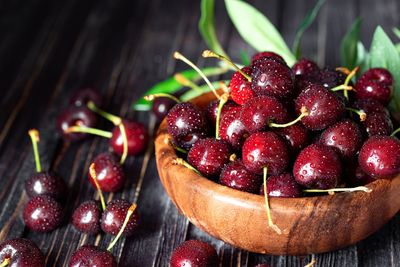What are Attika Cherries?
This is a mid to late season cherry that came to the U.S. from the Czech Republic. Its exact origins and parentage are unknown, but it is a favorite for sweet cherries that are large and durable in storage and transport. Bing cherries are the benchmark for harvest times, and Attika falls later in the season. It can be harvested about one or even two weeks after Bing. Kordia cherries are known to resist rain-crack and damage when being transported or harvested. Attika cherry trees are technically self-fertile, but they benefit from having another variety nearby for pollination. This will result in more fruit.
Growing Attika Cherries
Attika cherries can be grown in zones 5 through 7. They require full sun and soil that is fertile and well-drained. Amend your soil with compost if necessary before planting. Set dwarf trees about 8 to 14 feet (2-4 m.) apart and larger trees up to 18 feet (5.5 m.) apart. While your tree establishes roots, water it regularly during the growing season. After year one, it should be well established. Once your tree is established, Attika cherry care is pretty simple and mostly involves pruning and watering only as needed. If you don’t get one inch (2.5 cm.) of rainfall per week during the growing season, water your tree and give the roots a good soaking. Prune during the dormant season to stimulate new growth and keep a good shape. Cherry trees should be pruned to grow a central leader and fruit should be thinned to promote strong production of healthy cherries. Harvest when the cherries are fully ripe; they develop more sugar in the last couple of days of ripening, so resist the urge to pick early. Harvest time for sweet cherries like Attika is typically in June or July, depending on your location.
